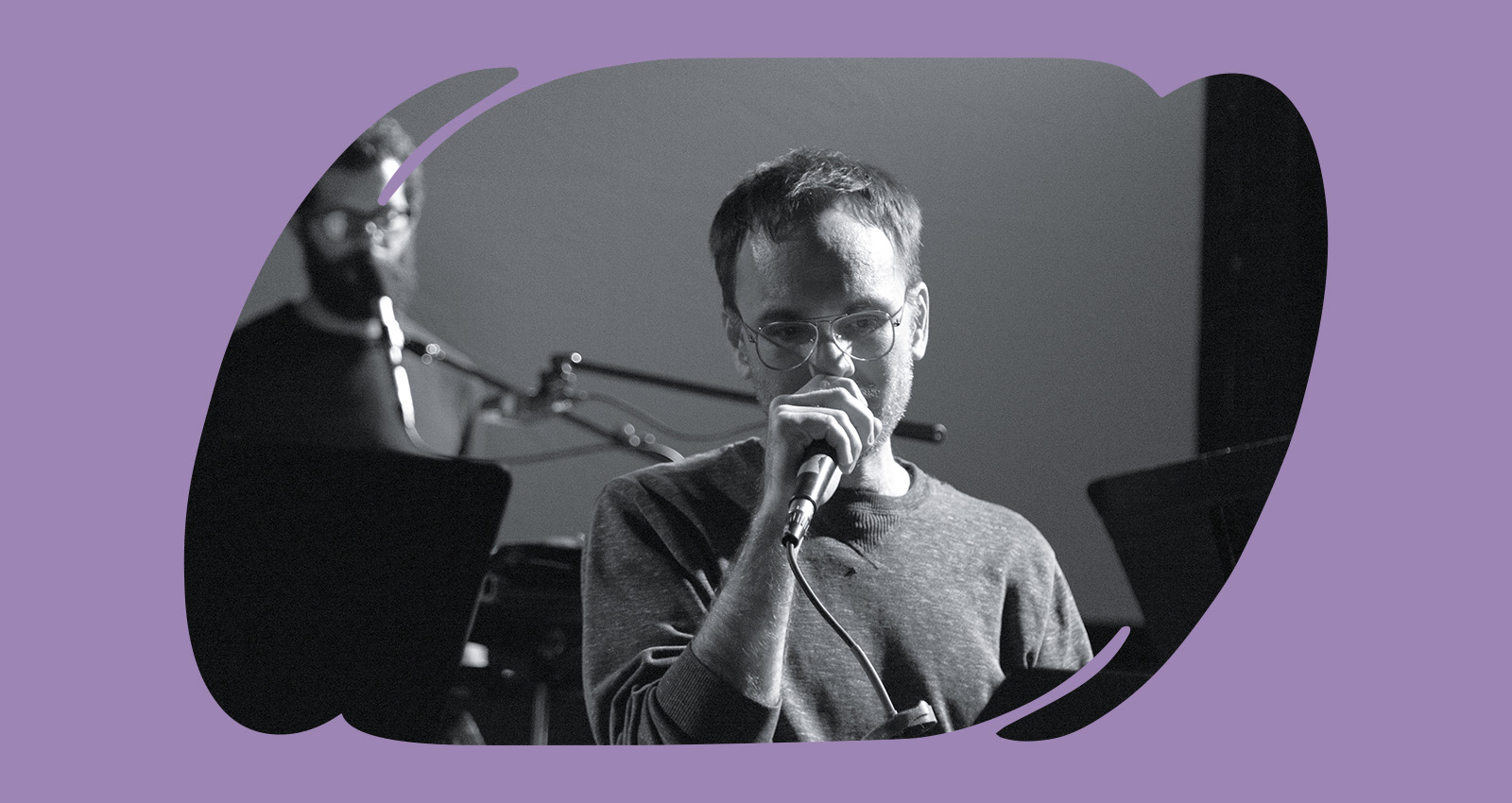
The taxonomy of contemporary classical music—new music, contemporary music, whatever you want to call it—is a thorny issue. But every month, we’ll take a look at some of the best composer-driven music to surface here on Bandcamp, that which makes room for electronic experimentation, improvisation, and powerful takes on old classics.
Anna Thorvaldsdottir
ARCHORA/AIŌN

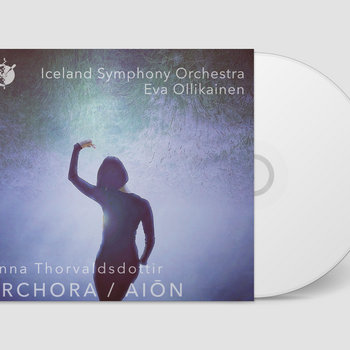

Compact Disc (CD)

Most of the music I’ve previously experienced by the Icelandic composer Anna Thorvaldsdottir has delivered sublime representations of the natural world—not only sound, but physical atmosphere and topography as well. The dynamic range has allowed for the smallest, most brittle sounds as well as thunderous rumbles that seem to emanate from the Earth’s very core. When conjuring a certain landscape, she delves simultaneously into inherent mental states, conditions that might be aptly described by natural phenomena.
The two recent orchestral works tackled on this album by the Iceland Symphony Orchestra, conducted by Eva Ollikainen, magnify Thorvaldsdottir’s aesthetic, as Ollikainen deploys the massive firepower of the orchestra to bring Thorvaldsdottir’s vocabulary of the brittle and delicate into starker relief. When the 20-minute ARCHORA opens there are violent, massed bass plucks that suggest tree branches lashing in a rainswept wind, while a magnificent cluster of descending strings signal a more general sort of dread that feels cyclonic. The three-movement AIŌN pulls even further away from the earlier work, with an abstract meditation on different iterations of time; the music toggles between micro and macro views, like some kind of aural VR experience. Thorvaldsdottir’s arrangements embrace the physical possibilities of an orchestra in a way that’s both exhilarating and terrifying.
Ben Vida with Yarn/Wire & Nina Dante
The Beat My Head Hit



Vinyl LP

Veteran experimentalist Ben Vida spent four years developing the five pieces of this mesmerizing work with pianist Laura Barger and percussionist Russell Greenberg of New York’s Yarn/Wire, and the results take their time sinking their teeth into one’s consciousness. That slow burn makes sense considering the detail in Vida’s texts, which he recites in a sort of incessantly rhythmic chant—albeit one in constant flux—in tandem with vocalist Nina Dante. At first blush the vocals seem flat and impassive, but over time they gain resonance, especially as one begins to suss out the ever-shifting phrasing and rhythmic play. By the end both Vida and Dante’s performances are clearly virtuosic.
The meaning of the texts seem intentionally fuzzy, with bits and pieces of understanding emerging over time or certain phrases standing out and making an elusive impact. Just as patiently Yarn/Wire’s minimalist soundscape reveals itself, with new details oozing out of the cyclical piano and vibraphone patterns bar by bar. There are wordless vocal harmonies floating in the distance on “Who’s Haunting Who Here?” The steady left-handed piano note in “Drawn Evening” takes on a directional role, grounding a spacious, slow-moving soundscape that opens the most delicate and barren stretch of the album, even as it fades deep into the mix and its rhythm is passed to a cymbal. The Beat My Head Hit is unlike anything I’ve heard in a long while, and if my listening thus far is any indication, it’s got a lot more secrets to give up in the future.
Éliane Radigue
Naldjorlak

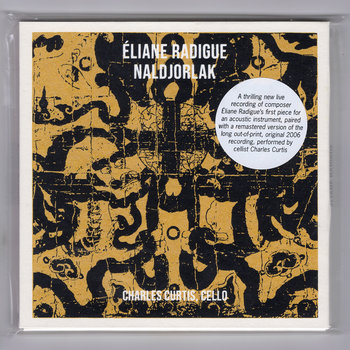
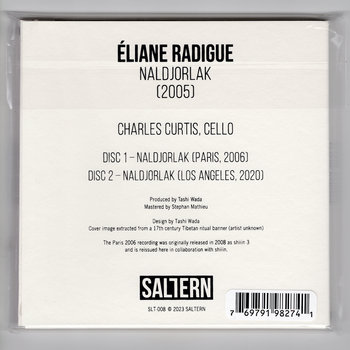

Compact Disc (CD)


This astonishing double CD collects two performances, recorded in 2006 in Paris and 2020 in Los Angeles, of Naldjorlak by the cellist Charles Curtis, who collaborated on this piece with the singular French composer Éliane Radigue in 2005. After spending decades creating electronic music, this epic became her first composition for acoustic instrumentation. The duo built the music around the “wolf tone” of the cello, when a particular pitch activates the resonant frequencies of the instrument’s wooden body—becoming wildly unstable and unleashing all sorts of sounds that conventional Western music has sought to banish because they consider them impure and distracting. Rather than eschewing this remarkable sonic effect, Curtis and Radigue developed an entire piece that explores the wolf tone across the entirety of the instrument’s range, tuning three of the instrument’s strings to this pitch area, while adjusting the fourth to project those volatile frequencies onto the cello’s metal tailpiece.
As Curtis proceeds our ears gravitate toward the often tremulous bowed sounds he’s struggling against science to maintain. At some point we begin to hear the effects of the wolf tone: amorphous rumbles; whirling, whistle-like sounds; turbulent jitters that seem three-dimensional; and more. Beyond the actual arco lines Curtis opens up a veritable universe of sound and motion, a thrillingly unstable demonstration of acoustic phenomena that captures musical performance at its most exciting, unpredictable, and dangerous. Fourteen years separate the two accounts, but the piece can never sound the same twice. Curtis is getting more out of it than ever.
Emilie Cecilia LeBel
Field Studies
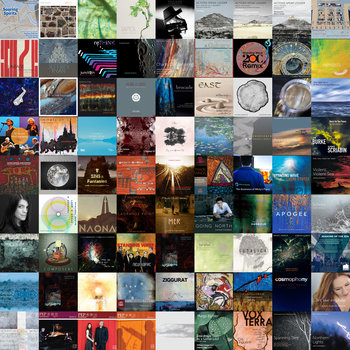
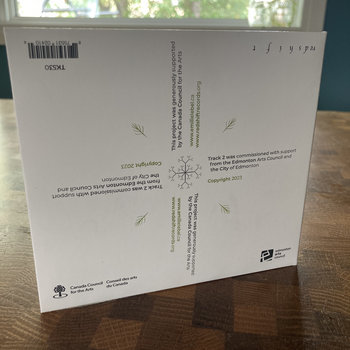
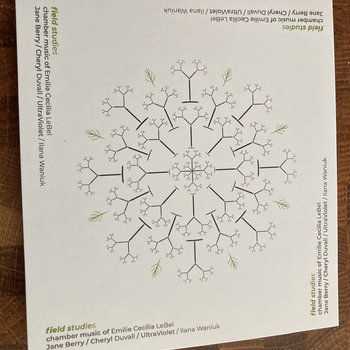
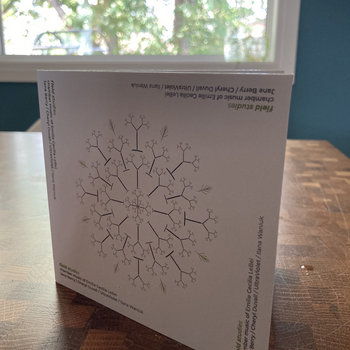
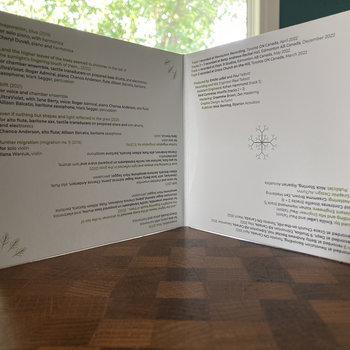


Compact Disc (CD)




Sometimes I marvel that a composer like Emilie Cecilia LeBel is only now releasing a portrait album, a decade into a prolific career. Field Studies is a quiet knockout; it proves that LeBel has arrived at this point with an assured, gripping aesthetic marked by contemplative patience and frequently undercut with a thread of emotional uncertainty.
“Evaporation, blue” is a work of stunning delicacy, with pianist Cheryl Duvall tracing out elegant, elliptical, austere keyboard chords suffused with slow decay while doubling on harmonica, blowing rustically contrasting tones. Several pieces were written for the Edmonton ensemble UltraViolet, a quartet that displays an uncanny sensitivity for LeBel’s ideas, as with the performance on “…and the higher leaves of the trees seemed to shimmer in the last of the sunlight’s lingering touch of them.” A pastoral grace veers on collapse with a fraught collision of needling saxophone and flute; forceful left-handed piano chords; and a percussive rumble deftly enhanced by the composer’s use of transducer speakers to generate sympathetic resonance. Vocalist Jane Berry (FEMME Vocal Quartet) injects measured melodic splendor into the tense shimmer the ensemble generates on “drift,” while violinist Ilana Waniuk produces a stunning range of sound and texture on “further migration (migration no. 1),” a feast of microtonal scrapes, whistles, and groans.
Nicole Lachartre
Mundus
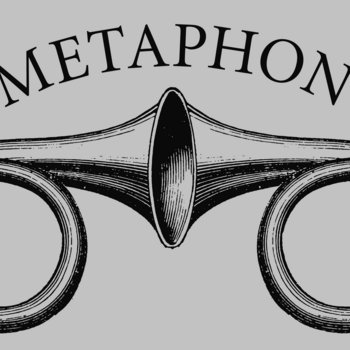

This significant collection, spread over three LPs, attempts to pull back the veil of obscurity hiding the potent electronic music of French composer Nicole Lachartre, who only had one small piece of music published during her lifetime (b. 1934–1991). Early on in her career she studied under Darius Milhaud, Jean Rivier, and André Jolivet. She composed a great number of works for acoustic instrumentation, but an internship with Pierre Schaeffer at the Groupe de Recherches Musicales de l’ortf (GRM) in 1967 quickly transformed her practice, leading to the 10 extended pieces featured here.
As the liner notes by Vincent de Roguin and Mark Harwood point out, her work eschewed the stylistic orthodoxy of her time. She generally avoided heavily edited, fluid assemblages in favor of something far more visceral, blending musique concréte and purely electronic sounds according to whatever the piece called for. Those same liner notes discuss the unquestionable sexism that stunted Larchartre’s music from being published or preserved over subsequent decades, so we should be thankful for this invaluable excavation. These pieces—including “Onirique,” her first electroacoustic piece, which was made at Pierre Henry’s Paris studio Apsome and which aggressively collides percussive inside-the-piano manipulations, voice, and uneasy electronic tones—are uniformly dense, often larded with noise and dissonance, and consistently evocative.
Various Artists
Fluxus & NeoFluxus / Stolen Symphony (Vol. 1)

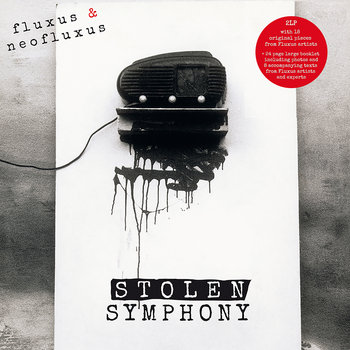


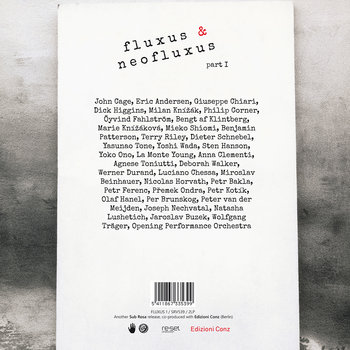
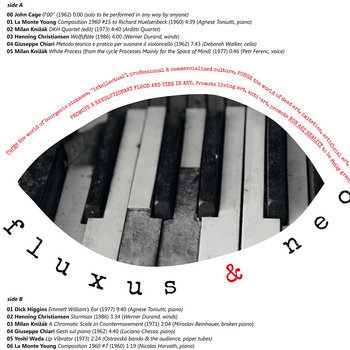


2 x Vinyl LP, Compact Disc (CD)




Stemming from some concert programs organized by the Czech experimental music group Opening Performance Orchestra a few years back, this impressive double CD casts a wide net on the enduring appeal (and confusion) of the Fluxus art movement. An impressive cast of experimental musicians—including cellist Deborah Walker, pianist Agnese Toniutti, and vocalist Anna Clementi—were assembled to engage freshly in works from the hefty, still expanding Fluxus oeuvre, with folks like Eric Andersen and Milan Knízák even composing some new pieces.
Wisely, the project makes no effort to imagine some framework of essential works—a hierarchical conceit utterly in opposition to the Fluxus ethos—but rather surveys work by many names often passed over in overviews of the movement. Naturally there are pieces clear-cut in their conceptuality or absurdity, such as the “paper” Luciano Chessa plays on Ben Patterson’s “Paper Piece,” or the variously filled bottles Werner Durand controls on a performance of Bengt af Klintberg’s “Triad No.1” which evoke the conventional process-oriented practice of much Fluxus work. But some of the other works function well as purely musical endeavors—like the collage of classical themes in Knízák’s 1973 piece “DKH Quartet,” heard in an excerpt from Arditti Quartet. The set includes a fascinating 72-page booklet, crammed with writing on the Fluxus legacy. A second 2-CD volume is due from Sub Rosa next year.
Brian Baumbusch
Chemistry for Gamelan and String Quartet

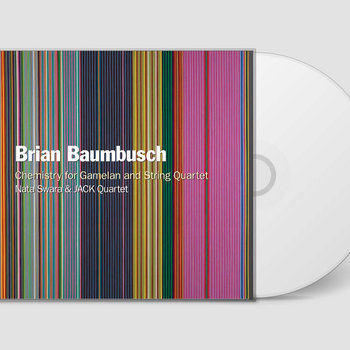

Compact Disc (CD)

There are a bunch of fascinating details behind the music on this new collection of works by Oakland composer Brian Baumbusch, few more notable than the fact that most of the pieces feature a gamelan-like orchestra called “Lightbulb Instruments” designed and built by him. The liner note essay by Oscar Smith delves into the rhythmic cycles and tuning involved in the compositions in extreme detail, mapping out the composer’s engagement with different tuning systems and ethnography in a way that undersells the stunning beauty and imagination of the music itself.
The opening work “Prisms for Gene Davis” is a nine-movement marvel performed by Nata Swara, a young Balinese ensemble that, more or less, consists of former students and ensemble members of Dewa Alit and his Gamelan Salukat—perhaps the finest exponents of contemporary gamelan music. Baumbusch has sent the second iteration of this “Lightbulb Instruments” dubbed “Gen 2,” as a gift to the ensemble, and they learned and recorded the piece at home. I don’t know enough about gamelan to point out details on how this departs from tradition, but the intense polyrhythms are decidedly modern. Baumbusch has developed his own hyper-complex system called polytempo, for which musicians have to navigate the same work in completely different time patterns. The members of JACK Quartet listened to click tracks to keep synchronized on the harmonically psychedelic “Three Elements for String Quartet.” On the album’s oldest piece, “Hydrogen(2)Oxygen,” the two ensembles combine with writing that both exposes and moderates the intense differences in their harmonic worlds.
Žibuoklė Martinaitytė & Synaesthesis
Hadal Zone

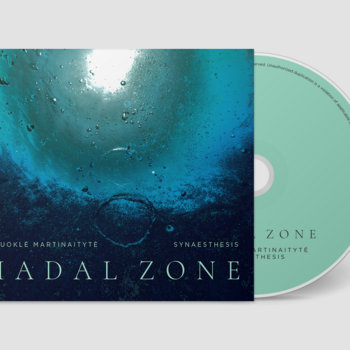

Compact Disc (CD)

Lithuanian composer Žibuoklė Martinaitytė strikingly evokes the titular region of the sea on this darkly brooding meditation that traces the most remote depths of the oceans through sound. The work floats and lumbers, with its structural detail emerging over time—much as our eyes adjust to what might seem like total darkness, soon noticing clear definition. The music is performed by Synaesthesis, a Lithuanian chamber ensemble of unusual timbre—bass clarinet, cello, piano, contrabass, and tuba—along with a bank of diffuse samples of the choral group Volti singing primarily vowel sounds, as well as additional tuba, contrabass, and bass clarinet sounds.
The sonic landscape they produce together is appropriately sepulchral, yet Martinaitytė manages to prevent Hadal Zone from ever becoming leaden or dense. The vocal samples, of course, sound human, but the chanting more often provides a texture or color than melody, even when there’s a keening presence in the comparatively light “Epipelagic” section, the uppermost level of the sea. Individual instruments regularly break out of the thrum to articulate something more defined and emotional, but ultimately the work focuses on the most monolithic qualities. She’s crafted a sonic profile that matches the relentless dark of the deep sea, and if we’re patient with our senses, the variegated details begin to seep through.
Kate Gentile/International Contemporary Ensemble
b i o m e i.i

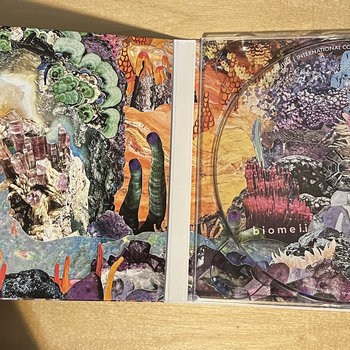

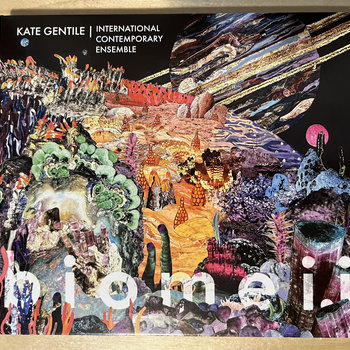

Compact Disc (CD)



Kate Gentile is perhaps best known as a drummer on the more experimental end of New York’s improvised music spectrum, where she’s led her own combos and worked closely with the pianist Matt Mitchell—who shares her knack for complex, serpentine writing—for more than a decade. However, she’s simultaneously developed into an assured composer of dauntingly rigorous music. This new suite, performed with International Contemporary Ensemble, represents the most refined and demanding set of music she’s created yet, a 13-part opus of meticulous imagination and wildly galloping rhythms. Gentile goes all in, naming each piece with words invented for their phonetic and visual pleasure, each consistently evoking science fiction, such as “vlimb” and “shorm.” After recording b i o m e i.i she retroactively went back and developed meanings for all of the new vocabulary.
That all-encompassing, feverish sense of creativity can certainly be gleaned from the actual music—hyperactive chamber pieces played by a superb cast fluent both in notated music and improvisation, driven by Gentile’s own virtuosic kit playing. It’s hard not to hear the influence of saxophonist Tim Berne in her labyrinthine patterns, with dizzying, detail-rich unison zig-zags and sudden structural explosions, but she utterly reinvents them by dint of timbre, pacing, and sense of scale. While there is a clear prog rock sensibility at work, there’s so much fizzy energy and joy in the performances that it never seems indulgent—especially when musicians like pianist Cory Smythe, violinist Jennifer Curtis, and bassoonist Rebekah Heller all pull inspiration out of the air in hot potato solos.
JG Thirlwell & Mivos Quartet
Dystonia

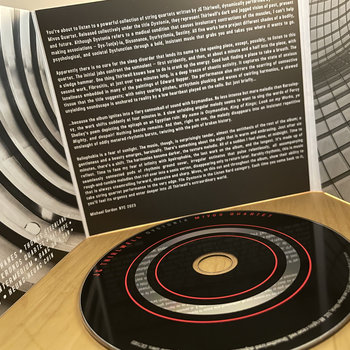
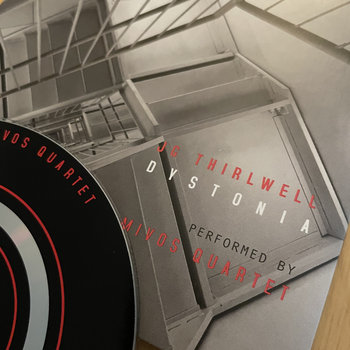

Compact Disc (CD)


Back when I was in college in the mid-1980s, I was a huge fan of JG Thirlwell, the weirdo Australian who melded post-punk and industrial music with rock ‘n’ roll in sui generis fashion, creating music of unceasing energy and restlessness under guises like Foetus, Wiseblood, and Clint Ruin. I stopped paying much attention to that work a long time ago, but I knew that he had become a solid supporter of the contemporary classical scene in New York. He proves that he’s much more than a fan with Dystonia, a wildly visceral, driving string work played here with typical precision and fury by Mivos Quartet. There’s an aggression that’s hardly surprising given Thirlwell’s musical past—albeit with clear flashes of Bartok and Shostakovich spilling out from the often relentless attack—but this is not the work of a hack. There’s remarkable detail and bracing counterpoint crackling through all five movements.
On the short “Fibrostitis,” one of the more measured sections and one of several named after muscle/nerve disorders, Thirlwell lays out thrillingly tactile scratches and tangles of sound, under which a throbbing, almost percussive, heart-like pulse emerges—but most of the sections are explosive. That relative calm is followed by the violently slashing lines of “Ozymandias,” which underlines how intense a string quartet can be, especially when it’s firing on all cylinders. Mivos has been at the height of its powers with the full integration of violinist Maya Bennardo and cellist T.J. Borden. They bring out the danger and vitality in Thirlwell’s writing.







